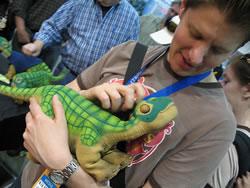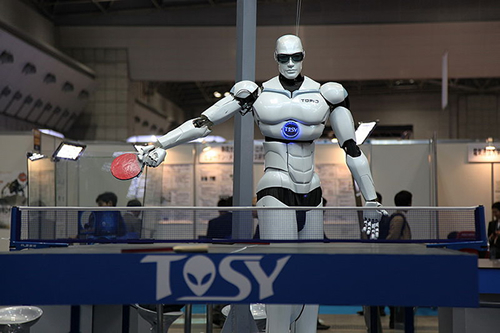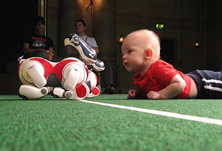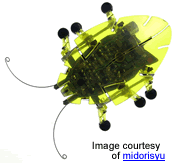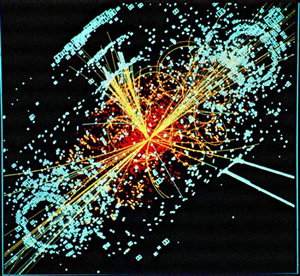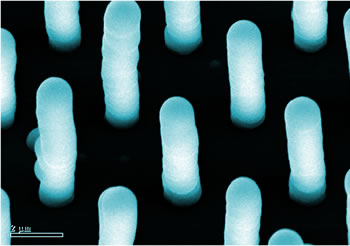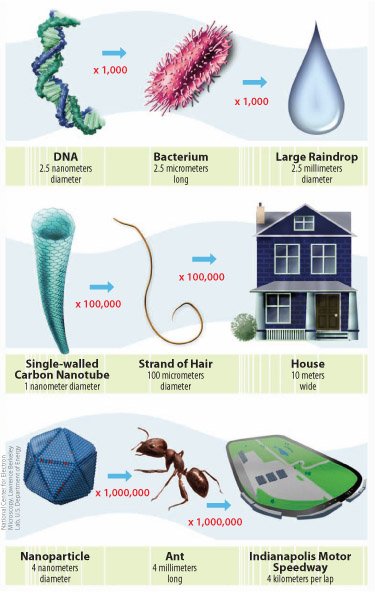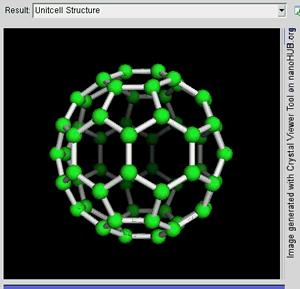Virtual Worlds
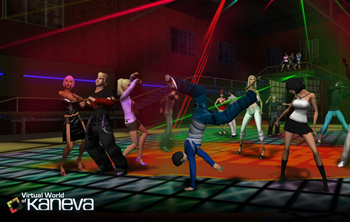
What is a Virtual World?
A virtual world is an interactive simulated environment accessed by multiple users through an online interface. Virtual worlds are also called "digital worlds," "simulated worlds" and "MMOG's." There are many different types of virtual worlds, however there are six features all of them have in common:
1. Shared Space: the world allows many users to participate at once.
2. Graphical User Interface: the world depicts space visually, ranging in style from 2D "cartoon" imagery to more immersive 3D environments.
3. Immediacy: interaction takes place in real time.
4. Interactivity: the world allows users to alter, develop, build, or submit customized content.
5. Persistence: the world's existence continues regardless of whether individual users are logged in.
6. Socialization/Community: the world allows and encourages the formation of in-world social groups like teams, guilds, clubs, cliques, housemates, neighborhoods, etc.
Virtual worlds have been created for many different purposes. The largest and most common type of virtual world is the "MMORPG" which stands for "Massively Multiplayer Online Role Playing Game." But virtual worlds have also been built for purposes other than gaming. The following section summarizes a few ways in which virtual worlds are currently used:
Commercial Gaming Commercial gaming worlds tend to focus on a singular fictional theme and consistently follow formal conventions such as character-focused avatars, progression through an interactive narrative storyline, and a series of competitive events. Strongly influenced by fantasy, science fiction, and anime genres of literature and film, the majority of sizable virtual worlds in existence today are commercial gaming worlds.
1. Shared Space: the world allows many users to participate at once.
2. Graphical User Interface: the world depicts space visually, ranging in style from 2D "cartoon" imagery to more immersive 3D environments.
3. Immediacy: interaction takes place in real time.
4. Interactivity: the world allows users to alter, develop, build, or submit customized content.
5. Persistence: the world's existence continues regardless of whether individual users are logged in.
6. Socialization/Community: the world allows and encourages the formation of in-world social groups like teams, guilds, clubs, cliques, housemates, neighborhoods, etc.
Virtual worlds have been created for many different purposes. The largest and most common type of virtual world is the "MMORPG" which stands for "Massively Multiplayer Online Role Playing Game." But virtual worlds have also been built for purposes other than gaming. The following section summarizes a few ways in which virtual worlds are currently used:
Commercial Gaming Commercial gaming worlds tend to focus on a singular fictional theme and consistently follow formal conventions such as character-focused avatars, progression through an interactive narrative storyline, and a series of competitive events. Strongly influenced by fantasy, science fiction, and anime genres of literature and film, the majority of sizable virtual worlds in existence today are commercial gaming worlds.
Socializing / Online Community Building
In addition to the traditional fantasy RPG worlds, there are many commercial community-focused virtual worlds that emphasize socializing rather than gaming. These worlds offer a more open-ended experience and are strongly influenced by the cultures of text-based chat rooms. Although small-scale, casual games may be incorporated into a social world, participants are not necessarily there to win or play a game, but rather to socialize with others and, in many cases, create and decorate a personal space such as a home, room, or apartment. Social worlds tend to use settings based on idealized versions of reality. Most provide some basic building tools and the ability to host activities and events that revolve around a wide variety of topics.
Education
Some virtual worlds have been created for educational purposes. In most cases, educational worlds are sponsored by academic institutions or nonprofit organizations, although some educational worlds are sponsored by corporations. Educational worlds come in a wide variety of forms, including 3D recreations of museum and gallery spaces, computer programming tutorials, virtual libraries, and meeting spaces for online university courses. Active Worlds Educational Universe is one of the oldest and largest networks of educational worlds. Adobe Atmosphere is also being used to build virtual worlds for educational purposes. A great example of a corporate-sponsored educational world is Mokitown.
Political Expression
Virtual worlds can serve as forums for political expression and debate. While real-world political issues can crop up in gaming, social, and educational worlds, there are a few cases in which completely separate virtual worlds have been built for the purpose of political debate or even experiments in various types of self-governing online communities. A great example of a virtual world with a political focus is AgoraXchange.
Military Training
Virtual world technologies are also being used in some interesting ways by the U.S. military. America's Army is being used as a tool to recruit potential soldiers, while companies like Forterra Systems are working with military groups to develop training simulations.



 Magnetic Levitation Transport, or maglev, is a form of transportation that moves vehicles via electro-magnetic force. Maglev trains can reach speeds
Magnetic Levitation Transport, or maglev, is a form of transportation that moves vehicles via electro-magnetic force. Maglev trains can reach speeds


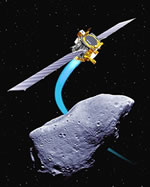
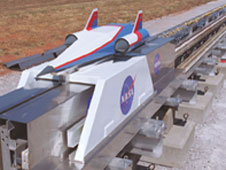 As NASA studies possibilities for the next launcher to the stars, a team of engineers from Kennedy Space Center and several other field centers are looking for a system that turns a host of existing cutting-edge technologies into the next giant leap spaceward.
As NASA studies possibilities for the next launcher to the stars, a team of engineers from Kennedy Space Center and several other field centers are looking for a system that turns a host of existing cutting-edge technologies into the next giant leap spaceward.
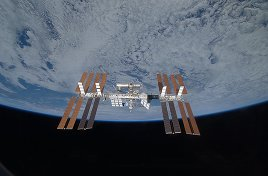

 Robotic engineers are designing the next generation of robots to look, feel and act more human, to make it easier for us to warm up to a cold machine.
Robotic engineers are designing the next generation of robots to look, feel and act more human, to make it easier for us to warm up to a cold machine.
